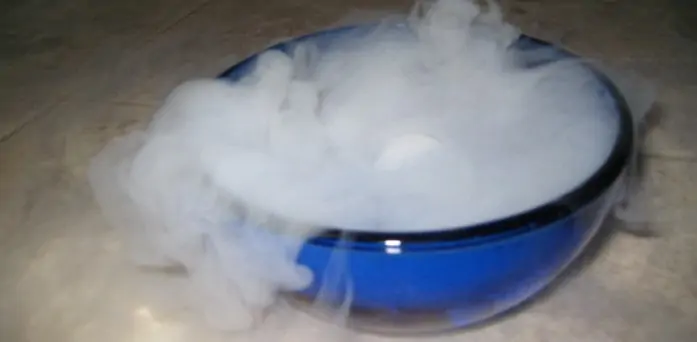Dry ice is such a cool substance (pun not intended). Popular for its misty, foggy effect, it’s a big hit at parties, shows, displays, and anywhere else you want to add some theatrics to the occasion. But when the show is over, you might be left wondering what to do with the ice. In this article, we examine the proper method for disposing of dry ice.
What to Do First
Before you dispose of dry ice, you need to be sure you have the proper tools for the job. These tools include:
Insulated Work Gloves – Insulated gloves are very important for handling dry ice. You need gloves that are properly rated to handle the extreme cold. Ideally, you should buy heavy-duty insulated gloves (such as Nitrite exam gloves). You can also use ice tongs to handle the ice if you prefer.
Styrofoam or Hard Plastic Tray – You’re going to need a spot to place the ice so that it has proper ventilation, but also won’t harm any surfaces it touches. Ideally, you’ll want a wide tray made of hard plastic or hard Styrofoam.
How to Dispose of Dry Ice
Once you have the tools for the job, the process of disposing of the ice is relatively simple. But you do need a well-ventilated area, and some time to spare.
Disposing of dry ice is essentially just letting it “sublimate”. Sublimation is the process where the ice turns from solid to gas form. Once it fully sublimates, the dry ice will be gone.
Here’s how you do it:
Step 1 – Find a Ventilated Area
You need an open area to allow the ice to sublimate. If you have access to an outdoor space, this is best. Otherwise, choose your biggest room and open some windows. The idea is to give the ice as much space to sublimate as possible, without creating a hazardous interior environment which makes it difficult for you to breathe.
Step 2 – Place Ice on Tray
Using your gloves or tongs to handle the ice, place it on your hard plastic or Styrofoam tray. Place the ice in your ventilated area of choice. If indoors, try to place it near an open window (or even on a balcony).
Step 3 – Wait
The idea is to allow the ice to fully sublimate from solid into gaseous form. Once it has fully sublimated, the dry ice will be gone! Depending on how much ice you have, the process may take a day or more. Generally, it takes about a day to sublimate 10 pounds of ice (but it depends on the thickness of the ice).
This is why it’s so important to choose a spot that won’t cause much of an impediment to your daily life. You want the ice to sublimate without causing too many distractions, or without making it difficult to breathe.
Step 4 – That’s It!
Check back periodically. Once the ice is fully sublimated, you’re done!

What NOT to Do with Dry Ice
Perhaps the most important thing to understand about dry ice is how NOT to dispose of it. This will help anyone understand why disposing of this substance properly is extremely important.
Extreme Cold
You are surely already aware that dry ice is extremely cold. But many don’t know how cold this substance actually is. Dry ice is usually around -109 degrees Fahrenheit, or -78.5 degrees Celsius. This is so cold that you can receive moderate to severe frostbite within seconds of touching the ice.
This extreme cold is also the reason that dry ice cannot be disposed of with traditional means. If the ice is disposed of improperly, it can cause severe damage to anything it touches. It can cause immediate damage to many surfaces, cause cracks in pipes and plumbing, damage floors and counters, etc.
The Sublimation
Dry ice is famous for its “fogging” effect. This is actually a process known as sublimation, in which the dry ice transitions directly from solid to gaseous form. In this process, the dry ice emits carbon dioxide. If you dispose of this ice in an airtight container while it is sublimating, the gas buildup could actually cause an explosion.
This is why you should NEVER keep dry ice in an airtight container, even during storage and transportation. It needs a ventilated area to sublimate. You can purchase specially designed dry ice storage containers online.
Needless to say, stick to our process above! Handling dry ice improperly can potentially result in catastrophe.
Conclusion
Thanks for checking out our guide to proper disposal of dry ice. Dry ice isn’t necessarily difficult to dispose of, but you need the proper tools and you need a proper space to let it sublimate. This is something you really don’t want to do improperly.
For more guides on proper disposal of potentially hazardous household substances, check out our guides to gasoline, cooking oil, and paint.
